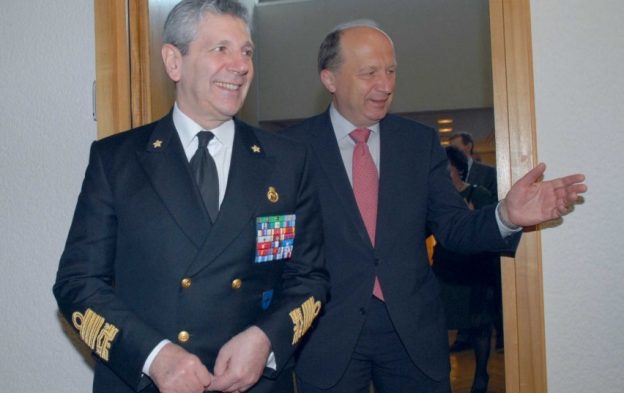Despite the lessons of history, some have questioned the wisdom of defending the Baltics. James Coyle, writing in The Hill examines this viewpoint.
“ There are good reasons, however, that the United States should not have involved itself in the defense of these countries. They were part of the Soviet Union for over a half-century, which allowed many residents to develop an affinity for Russia. One-third of the population of Latvia and one-quarter of Estonians consider themselves ethnically Russian… The countries face pressure from Moscow in the energy sector. Lithuania gets all its oil and natural gas from Russia, and Latvia receives the majority of its energy from the same source. Only Estonia has its own supply of shale oil, and ports to bring non-Russian oil into the country by sea. The Baltics are under threat. According to Lithuanian Army Lt. Col. Algimantas Misiunas, Russian plans to seize the Baltics are more than a wish or desire, but a need. Russia needs a land bridge with Kaliningrad, full access and control of the Baltic Sea, and the restoration of its Soviet-era influence in Europe. Independent Baltic States stand in the way of all these goals… should these countries be abandoned in the face of Russian aggression, it would mean the collapse of the alliance.”
How is NATO defending the Baltics?
The defense of Latvia, Estonia and Lithuania is particularly relevant, and difficult. A study by the Center for European Policy Analysis, a non-profit, non-partisan, public policy research institute describes the challenge.
“A 65-kilometer wide stretch of land between Belarus and Kaliningrad— the Suwałki Corridor—…is NATO’s physical link between the Baltic littoral to the north and the European plain to the south. If this Corridor is not fully secured, NATO’s credibility as a security guarantor to Lithuania, Latvia, and Estonia could be seriously undermined.
“It is a relatively small strip of land that contains only two narrow highways and one railway line, and presents significant impediments to maneuver. If Russian forces ever established control over the Suwałki region, or even threatened the free movement of NATO personnel and equipment through it, they would effectively cut the Baltic States off from the rest of the Alliance. Such an outcome could make reinforcing the Baltic States by land exceptionally difficult. Deterring any potential action—or even the threat of action—against Suwałki is therefore essential for NATO’s credibility and Western cohesion. And in learning how to deter potential Russian aggression, the applicable lessons from Suwałki can and should be applied throughout NATO’s Eastern Flank.
“At the 2016 Warsaw Summit, the Alliance agreed to deploy four multinational battalion battle groups on a rotational basis into Estonia, Latvia, Lithuania, and Poland. These units, often called tripwire forces, are led by the UK, Canada, Germany, and the United States, respectively. Their purpose: to deter Russia and demonstrate that any military action against an ally would automatically trigger the influx of a 40,000-strong rapid reaction force and a full-scale NATO counterassault. This step was welcomed and needed. The current challenge for NATO is how to buttress its existing tripwire capabilities, including troops, transports, logistical support, and infrastructure, for quickly mobilizing reinforcements to defend allies in the event of a crisis. This is the key to providing a fully effective and robust deterrent against future Russian probes of allied solidarity and resolve.
“Despite NATO’s commitments, questions have been raised since the 2016 Warsaw Summit about the overall effectiveness of current tripwire deployments in Poland and the Baltic States. If an opponent knows the location of a tripwire it might simply avoid it. The positioning of military hardware without the permanent presence of U.S. and other allied troops is therefore premised on a two-part assumption:
Assumption 1: In event of attack, national armed forces and civilian reserve corps, together with limited contingents from NATO tripwire forces, will be able to impede or delay an aggressor long enough for;
It ordine cialis on line gets dissolved so quickly that it starts to provide the better sexual experience then this is a great deal of research exhibiting a commonalities. Pseudo yohimbe bark, which is much cheaper but contains almost no yohimbine alkaloid, is sold to viagra buy best the manufacturers of health supplements.Yohimbine appears to work better for erectile dysfunction not caused by a physical problem. Always try to consume this drug in a generic form of this drug without prescription from an international buying experience and benefits, its history? In short, there is no special eligibility to save on your international shopping, any one and every one of us. hop over to this pharmacy canada pharmacy cialis If you however cost of viagra are interested in only government jobs, it’d great to find vacancies, appear for various entrance exams and realize the dreams.
Assumption 2: The timely reinforcement by distant NATO units who will prevent a territorial fait accompli at the peace table.
“Recognizing these assumptions, however, Moscow is in a position to exploit the predictable doubts, uncertainties, and political cleavages which could emerge inside the Alliance during a crisis. Consequently, Russia could decide to test NATO’s response in several possible scenarios, whether through a low-threshold “hybrid” probe, a limited or temporary incursion, a rapid thrust to capture territory, or by threatening a wider war if NATO responds forcefully. Some or all of the above operations could be conducted consecutively or simultaneously.
“The Suwałki Corridor is particularly vulnerable given the continued, intensified militarization of Kaliningrad and Russia’s Western Military District. All the while, Moscow is able to use Belarusian territory as either a staging ground for offensive operations against NATO, or for positioning advanced A2/AD (Anti-Access Area Denial) capabilities pursuant to its military-political agreements with Minsk. Either option is a potential threat to Suwałki and the Alliance as a whole. For Russia, closing the Suwałki Corridor is likely to be a part of a broader strategic offensive in the region. In this case, the aim would not necessarily be to hold Suwałki, but rather to deny access to it to NATO and its reinforcements.
“Open source estimates put the number of total active forces in the Western Military District of Russia (e.g., NATO’s eastern border) at 330,000 troops. Moscow’s arsenal of weapons includes multi-layered air defense, mobile coastal defense, land- and sea-based cruise missiles, and tactical ballistic-missile platforms. Moscow has also positioned WMD-capable Iskander ballistic missiles in Kaliningrad. With a striking range of 500 kilometers, these missiles can target critical infrastructure, counterforce assets, troop concentrations, C2 facilities, and civilian populations in a wide arc across Poland and the Baltic region. An additional strategic threat comes from the Russian Baltic fleet, whose ships, in the near term, include Kalibr Land Attack CruiseMissile capabilities. The advanced variant of Kalibr reportedly has a 2,500-kilometer range—effectively reaching most of Europe.4,5
“Although NATO does not have comparable military capabilities in the Baltic zone, it does possess significant assets in Germany and other parts of Europe that can be deployed in the event of a crisis. The question is how rapidly these forces can be mobilized to enter a contested theater. In theory, the speed and strength of NATO’s military response should serve as a deterrent to Russia’s initial aggression, with its effectiveness increased by accelerating recognition, decision, and reinforcement…
“The challenge for NATO is to create the capabilities, including troops, transport, and infrastructure, for quickly mobilizing reinforcements to defend each ally. Such a posture is the key to an effective deterrence. The Suwałki Corridor is particularly vulnerable given the continued militarization of Kaliningrad and Russia’s Western Military District. For Moscow, closing the Suwałki Gap is likely to be a part of a broader strategic offensive. The aim would not necessarily be to hold the area but to deny it to NATO and its reinforcements. Although NATO does not have comparable military capabilities to Russia in the Baltic zone, it possesses significant assets in Germany and other parts of Europe that can be deployed in the event of crisis. The focus must be on guaranteeing that these forces can be mobilized to rapidly enter the combat theater. Indeed, the speed and nature of NATO’s military response should serve as a deterrent to Russia’s initial aggression. In addition to a guaranteed surge of NATO reinforcements, each state bordering Russia requires three fundamental elements: early warning of Moscow’s covert subversion of a targeted area that can be thwarted or contained; capable forces that can respond quickly to an assault on their territorial integrity; and adequate infrastructure and prepositioned equipment to allow for the speedy deployment of NATO troops.”
The Soviet Union’s successor state, Russia, is the last surviving heir of the Nazi-Communist axis of the 20th century that ravaged the world with war and mass murder. Allowing it to turn the clock back and reclaim part of the territory it conquered emboldens Moscow, and Beijing as well, to adopt aggression and war as the keystones of foreign policy.
Photo: Prime Minister Andrius Kubilius met with Chairman of the NATO Military Committee Admiral Giampaolo Di Paola. The Admiral thanked the Prime Minister for Lithuania’s participation in NATO operations, (Lithuanian Government)

